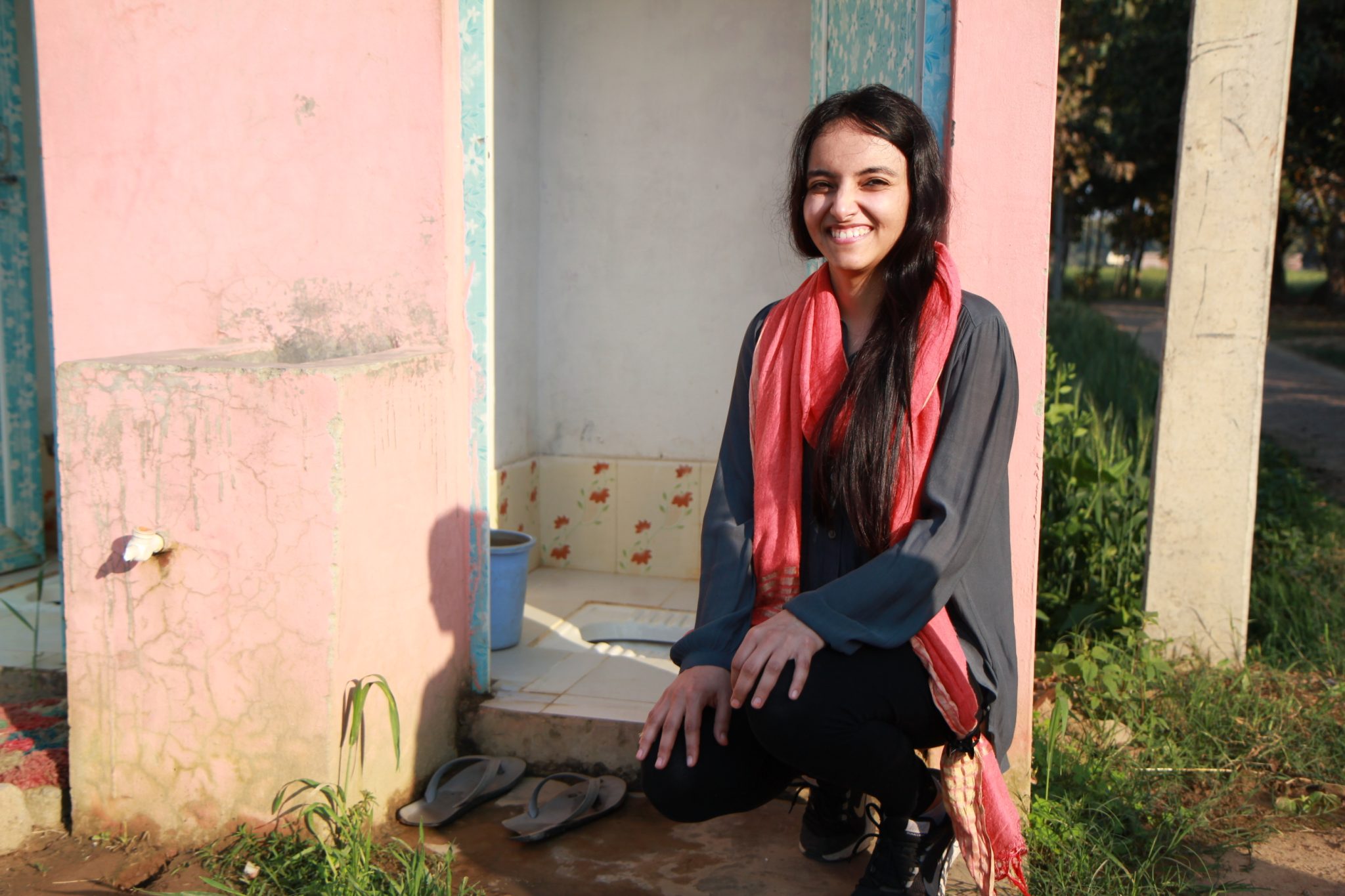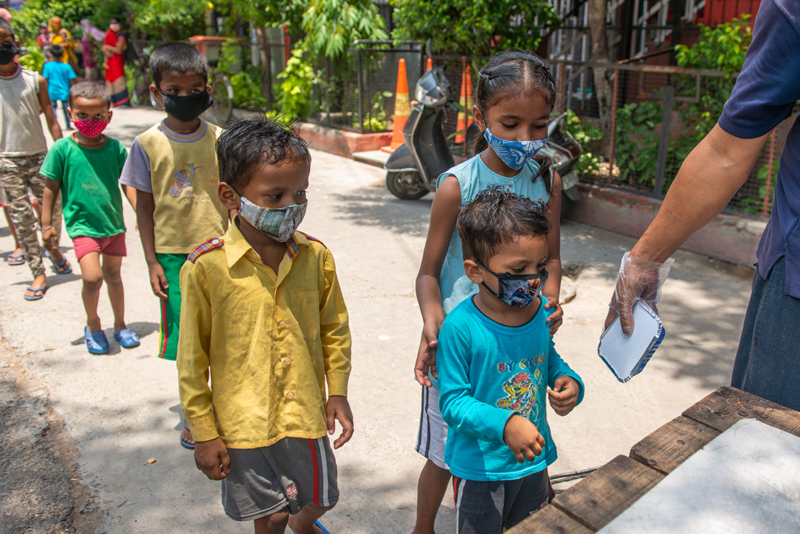Ending Open Defecation: My Sanitation Story

Out of the 892 million people across the world who practice open defecation, the majority live in India. Most reside in the country’s rural areas. Inadequate sanitation is one of the leading causes of fatal diarrhea and infant mortality in India, and is known to cause severe, long-term health repercussions like low height-for-age, sub-optimal cognitive development, and compromised ability to earn.
The Government of India recognized the elimination of OD as an urgent public health concern and launched India’s most ambitious sanitation program, Clean India Mission, in 2014. Yet despite the significant rise in toilet coverage across India, increased access has not translated into sustained adoption or significant gains in child health outcomes.
To better understand the persistence of OD and how it can be addressed, I undertook a field-based study of the sanitation practices of rural communities in Maharajganj, Uttar Pradesh, in 2016. From interviews and group discussions, I came to understand that OD is an integral part of people’s lives in these communities and that their perceptions of the benefits of OD are a significant barrier to its elimination. In subsequent years, I designed an ambitious experiment involving the construction of 600 toilets to help explain why OD sometimes persists even in households with privies, the impact of generating demand for commodes through behavior change interventions, and the wide-ranging effects of toilet use on health and welfare outcomes.
Habits are Hard to Break
OD’s enduring existence poses a dilemma to scholars, policymakers, and program implementers alike. While rightfully viewed as an unhygienic practice, insights from my fieldwork suggest that for people living in rural areas of India, OD is a habit—a deeply entrenched, centuries-old way of life.

Payal Seth teaches a child proper handwashing technique as part of her study’s behavior change communication program. (Photo by Jonathan Miller)
The routine of OD subsumes a host of other activities beyond just doing one’s business. For both men and women, OD is practiced in groups. Typically, small clusters of friends and peers gather in a common place and walk for 30-60 minutes to reach their pre-determined, isolated locations. For this reason, OD is considered healthier than squatting over a toilet, as it gives them a chance to take a long walk before relieving themselves. They also have an opportunity to discuss the events of the day. People practicing OD often don’t associate it with any adverse impact on health.
Understanding this distinction and respecting people’s decision to practice OD—even in the presence of toilets—was an important step before introducing and familiarizing them with bathroom use. As I ventured deeper into my research, I realized that much like any other bad habit, OD needs both an initial intervention and a sustained effort to break it.
Stopping Open Defecation Requires Behavior Change Communication
The most important thing I learned during my fieldwork is that using a behavior change communication (BCC) intervention to generate demand for sanitation facilities is key to eliminating OD. A social norm as deeply rooted as OD can only be thwarted by an unexpected shock that makes people aware of the extent of its harm.
We employed a popular sanitation BCC intervention: community-led total sanitation (CLTS). CLTS is an innovative strategy that mobilizes communities to become OD-free by internalizing the several ills of the practice. It recognizes that access to toilets alone will not guarantee their adoption and that adoption by only some community members still leaves the entire community exposed to fecal matter.
We place a strand of hair in the excreta and dip it in a glass of water before politely offering the bystanders a drink. They indignantly refuse.
Of the many CLTS activities aimed at empowering the community to stop OD, one of the most important is the triggering activity. After gathering the community members in one place and conducting preliminary exercises, we ask them to take us (the CLTS facilitating team) to their routine places of defecation. These places are filled with excretal matter. We ask them to circle around the foul-smelling excreta and commence an apparently bewildering exercise. We place a strand of hair in the excreta and dip it in a glass of water before politely offering the bystanders a drink. They indignantly refuse. As flies begin to gather on the excreta, we start drawing parallels. A fly has six hair-like legs. So, every time they swatted a fly from their food or the water, they unintentionally ingested six times more fecal matter than the glass of water that they refused to drink. This realization triggers a deep sense of disgust and discomfort at the extant sanitation practice among the community members. The community is driven to end OD as they are motivated to end the disturbing ingestion of fecal matter.
This crude visual demonstration of the fecal-oral route sets in motion the future course of events: building temporary toilets, regular follow-up by the facilitating team to ensure their sustained use, and ending OD in every household within the community. After a few months, we replaced the temporary toilets with pucca, or permanent, toilets.
While BCC interventions are not necessarily more important than access to toilets, our experience indicates that unless access is complemented with a BCC program, the uptake of sanitation facilities will be neither sustained nor uniform across community members.
Freedom from Open Defecation Has Far-Reaching Consequences
Our research captured significant gains in child health outcomes within the communities that universally adopted toilet use. This is in line with other studies that have shown a strong association between OD and child health outcomes like diarrhea and height-for-age.
However, eradication of OD also holds the key to a persistently understudied issue: women’s safety.
During my fieldwork, I became acquainted with the rampant sexual abuse faced by women while they ventured in the dark to isolated places for OD. It helped me understand the context of the chilling incident of the gang-rape and hanging of two women in Uttar Pradesh in May 2014. Those women were on their way to practice OD. While this unfortunate event shook the entire nation and received condemnation from the United Nations, fieldwork taught me that it was not an isolated incident. This kind of abuse is a pervasive, frequent, and quite often fatal risk to women’s dignity and lives.
Discussing abuse and harassment with interviewers can be difficult. To ensure that female respondents were at ease while answering questions related to safety indicators, I conducted these interviews myself, and occasionally in the presence of a female translator.
I believe that ours is the first research study to systematically capture the impact of a sanitation intervention on women’s safety outcomes. We found that the adoption of toilets helped women feel safe and restored their dignity.
Calculating the Value of Sanitation
The World Bank estimates that poor sanitation accounts for a yearly loss of about 6.4% of India’s GDP, roughly $53.8 billion. On the other hand, the World Health Organization calculates that for every dollar invested in sanitation, households save $4 in avoided medical costs from diarrhea and other water-borne diseases, reduced mortality, and enhanced labor productivity. This calculation does not include the value of restored dignity and safety for women. Monetizing such benefits is implausible, if not impossible, as the lives that are saved are priceless. The importance of eliminating OD cannot be overstated.
For every dollar invested in sanitation, households save $4 in avoided medical costs from diarrhea and other water-borne diseases, reduced mortality, and enhanced labor productivity.
Insights from my fieldwork and research underscore that the benefits of sanitation investment far exceed the cost, not only in terms of relieving future generations of the heinous disease burden of OD, but also saving the present generation from life-altering and life-threatening circumstances. To realize these benefits, our research firmly establishes the importance of BCC interventions in attaining optimal adequacy in sanitation. The incorporation of BCC moves the markers of success of any sanitation story from mere access to toilets to sustained and universal adoption.
I express my gratitude to Dr. Prabhu Pingali for his invaluable insights and for placing his faith in me. I sincerely thank Dr. Mathew Abraham for saving me from several potential pitfalls throughout the project. I am grateful to M.C French for her kindness, as it always found me when I needed it the most. Besides TCI and their generous funding, I humbly acknowledge TCI’s NGO partner, Grameen Development Services for their unwavering support on the field.





